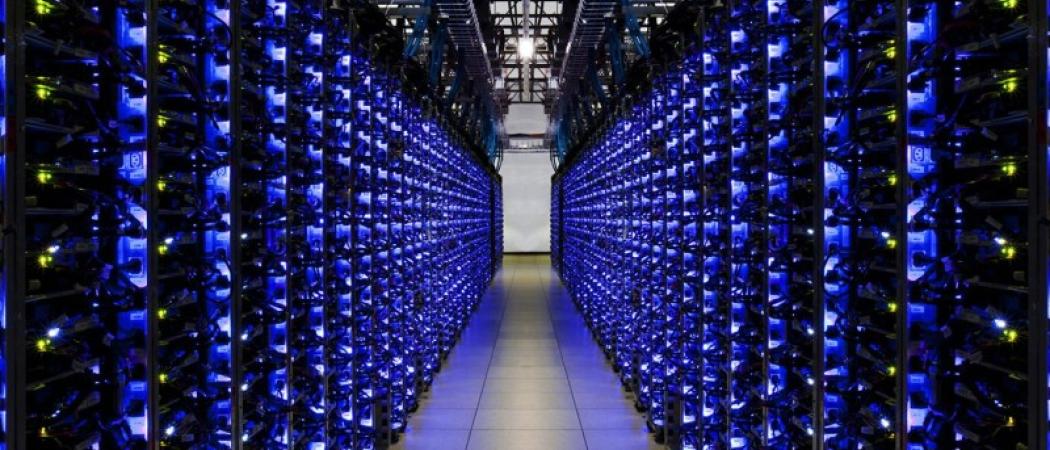Draft roadmap for the European Open Science Cloud paves the way for a governance structure to be in place by the end of 2018. A ‘soft overlay’ will gradually pull resources across Europe into a seamless whole

The draft roadmap has now been drawn up for the European Open Science Cloud (EOSC), a Commission initiative to make it possible for Europe’s 1.7 million researchers to access and analyse each other’s data.
The plan envisions a pan-European federation of existing and future research data infrastructures, in which access to both publically-funded and commercial resources is granted via “a federating core”.
Subject to the EU Competitiveness Council approving the plan in May, the governance framework could be established this year and the federating core put in place before the end of 2019, according to the staff working paper.
The roadmap, drawn up with input from the Council of Ministers, the European Parliament and other stakeholders, calls for the creation of a “soft overlay” to connect existing and planned data repositories, enabling them to operate “as one seamless European research data infrastructure.”
The federation process will be implemented gradually and on a voluntary basis, depending on stakeholders’ commitment of resources and capacity to comply with EOSC’s rules of participation. In addition, users will be expected to uphold the so-called FAIR principles, which require their data to findable, accessible, interoperable and reusable.
The draft roadmap leaves considerable room for manoeuvre on the final shape of EOSC. For example, the rules of participation may “apply differently to different EOSC participants,” depending on their maturity and whether they are data users or data providers, scientists or innovators, and if they are based in the EU, or elsewhere.
Five main types of service
Despite the fuzziness, the roadmap does begin to flesh out the nebulous concept of an open science cloud, which was first proposed by the Commission in April 2016.
In particular, the proposed EOSC would offer five main types of services to researchers, spanning different disciplines and across national boundaries:
- Identification and authentication to enable access to EOSC resources;
- A protected and personalised work environment/space;
- Relevant service information, including status of the EOSC, a list of the federated data infrastructures, policy-related information, description of the compliance framework and relevant guidelines;
- Catalogues of datasets and data mining, analytics, fusion and processing services, which enable users to find, access, re-use and analyse research data generated by others;
- Services to make data FAIR, to store it and ensure long-term curation.
It is proposed most of these services will be free of charge. However, the roadmap notes the re-use and analysis of “big data” or the deployment of large-scale computing power, in particular via a commercial service provider, may incur a fee. It adds that the cost model of the services in category 5 will, “be determined when deciding on the long-term business model for EOSC.”
Paying the bill
While there is little detail on the long-term business model, the roadmap does address the thorny question of who will pay to get EOSC up and running. The cost of the first phase of the initiative “is only marginally higher” than the resources that have already been earmarked by member states and the Commission for research data management, such as €300 million in the Horizon 2020 programme for 2018-2020.
Adding the funds allocated for 2018-2020 to those in the previous work programme, EOSC will have an initial budget of about €600 million.
Pointing to a lack of baseline figures, the paper does not attempt to estimate the additional costs that will be incurred by member states, noting only that they will “vary greatly” depending on the current state of data infrastructures and any planned upgrades.
Member states may find they are prodded into action by researchers. As many as 70 scientific interest groups signed the EOSC declaration following the summit hosted by the Commission in June, and 60 of them have committed to take action to make EOSC happen.
More broadly, the GO-FAIR initiative, launched jointly by the Dutch, German and French governments in support of FAIR data management, is gaining momentum, reflecting a growing appetite for a more open approach to scientific data.
Sustainability in the longer-term
For the second phase of EOSC after 2020, the paper suggests funding from Framework Programme 9 and/or national resources, saying member states could use European structural and investment funds to support selected data infrastructures. In addition, research grants, voucher schemes or tokens could be introduced to allow researchers to harness advanced EOSC services, supplemented by potential charges for commercial use of EOSC.
There are concerns that EOSC could disrupt Europe’s existing research ecosystem. However, the roadmap says, “In principle, the business models and funding streams of existing data infrastructures should not be affected by the development and operation of the EOSC, as long as they are compatible with the operating principles of the EOSC.”
To ensure both the funders and the users of the science cloud are represented, the paper proposes a three-layer governance framework for EOSC, comprising an executive board, a supervisory board representing member states and the Commission, and a stakeholders forum, providing input from a wide range of users.





 A unique international forum for public research organisations and companies to connect their external engagement with strategic interests around their R&D system.
A unique international forum for public research organisations and companies to connect their external engagement with strategic interests around their R&D system.